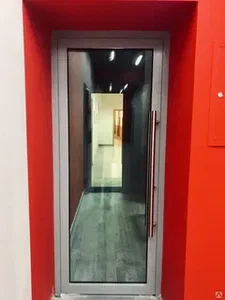Fire safety is an essential aspect of any building, particularly those with elevators. Elevators can act as pathways for smoke to travel quickly through multiple floors during a fire, making it crucial to have effective smoke control measures in place. One such measure is the use of elevator smoke curtains. These curtains help contain smoke, providing a safer environment for evacuation and reducing property damage. In this blog, we will explore the different types of elevator smoke curtains, how they work, and why they are important for building safety.
NOTE: Ready to enhance your building’s fire safety? Contact a professional supplier of Elevator Smoke Curtains now and ensure your building is prepared for any emergency. Protect lives and property with high-quality, reliable elevator smoke curtains. Don’t wait—act now and secure your building’s future.
Understanding Elevator Smoke Curtains
What Are Elevator Smoke Curtains?
Elevator smoke curtains are barriers designed to prevent the spread of smoke through elevator shafts during a fire. They automatically deploy when smoke is detected, creating a seal around the elevator doors. This containment helps keep smoke from spreading to other floors, making it easier for occupants to evacuate and for firefighters to control the fire.

Why Are Elevator Smoke Curtains Important?
Protecting Lives
The primary purpose of elevator smoke curtains is to protect lives. During a fire, smoke can travel quickly through an elevator shaft, spreading to multiple floors. This can make it difficult for people to find safe escape routes and can lead to smoke inhalation. By containing the smoke, elevator smoke curtains help keep escape routes clear and reduce the risk of smoke-related injuries.
Reducing Property Damage
In addition to protecting lives, elevator smoke curtains also help reduce property damage. By containing the smoke, they prevent it from spreading to other parts of the building. This containment can minimize the extent of smoke damage to the building’s structure and contents, potentially saving thousands of dollars in repair and restoration costs.
Types of Elevator Smoke Curtains
1. Vertical Smoke Curtains
Vertical smoke curtains are installed above the elevator doors and deploy downward when smoke is detected. They create a vertical barrier that prevents smoke from entering the elevator shaft. These curtains are typically made from fire-resistant materials and are designed to withstand high temperatures.
Key Features:
- Deploy from above the elevator doors
- Create a vertical barrier
- Made from fire-resistant materials
- Suitable for various building types
2. Horizontal Smoke Curtains
Horizontal smoke curtains are installed to the sides of the elevator doors and deploy horizontally. These curtains create a horizontal barrier that seals the elevator shaft from the sides. Horizontal smoke curtains are also made from fire-resistant materials and are designed to provide effective smoke containment.
Key Features:
- Deploy from the sides of the elevator doors
- Create a horizontal barrier
- Made from fire-resistant materials
- Ideal for buildings with wider elevator shafts
3. Combination Smoke Curtains
Combination smoke curtains incorporate both vertical and horizontal barriers to provide maximum smoke containment. These curtains are designed to deploy both vertically and horizontally, creating a comprehensive seal around the elevator doors. This type of curtain is particularly effective in buildings with complex elevator configurations.
Key Features:
- Deploy both vertically and horizontally
- Provide comprehensive smoke containment
- Made from fire-resistant materials
- Suitable for complex elevator configurations
How Do Elevator Smoke Curtains Work?
Activation Mechanism
Elevator smoke curtains are equipped with sensors that detect smoke. When smoke is detected, the curtains automatically deploy to create a barrier around the elevator doors. This activation mechanism ensures that the curtains are deployed quickly and effectively, providing immediate smoke containment.
Key Components:
- Smoke sensors: Detect the presence of smoke
- Automatic deployment: Curtains deploy when smoke is detected
- Fire-resistant materials: Ensure the curtains can withstand high temperatures
Benefits of Using Elevator Smoke Curtains
Improved Fire Safety
The primary benefit of using elevator smoke curtains is improved fire safety. By containing smoke and preventing it from spreading through the elevator shaft, these curtains help maintain clear escape routes and reduce the risk of smoke inhalation.
Enhanced Building Protection
Elevator smoke curtains also enhance building protection by minimizing smoke damage. By preventing smoke from spreading to other parts of the building, these curtains help protect the building’s structure and contents, reducing the extent of damage and the associated repair costs.
Compliance with Safety Standards
Installing elevator smoke curtains can help buildings comply with fire safety standards and regulations. Many building codes require effective smoke control measures, and elevator smoke curtains can help meet these requirements, ensuring that the building is safe and compliant.
Choosing the Right Elevator Smoke Curtains
Assessing Building Needs
When choosing elevator smoke curtains, it’s essential to assess the specific needs of the building. Consider factors such as the layout of the building, the size and configuration of the elevator shafts, and the level of fire risk. This assessment will help determine the most suitable type of smoke curtain for the building.
Working with a Reputable Supplier
Choosing a reputable supplier is crucial for ensuring the quality and effectiveness of elevator smoke curtains. Look for suppliers with a proven track record in fire safety and smoke control. Check reviews and ask for recommendations to find a trusted supplier that offers high-quality products and reliable installation services.
Installation and Maintenance
Professional Installation
Proper installation is essential for the effectiveness of elevator smoke curtains. It’s important to work with professionals who have experience installing these systems. Professional installation ensures that the curtains are correctly positioned and securely fixed, providing reliable smoke containment in an emergency.
Regular Maintenance
Regular maintenance is crucial for keeping elevator smoke curtains in good working condition. Schedule regular inspections to check for signs of wear or damage and perform necessary repairs or replacements. Regular testing should also be conducted to ensure the curtains deploy correctly when needed.
Conclusion
Elevator smoke curtains are a vital component of fire safety in buildings. They protect lives by preventing the spread of smoke through elevator shafts, maintaining clear escape routes, and reducing the risk of smoke inhalation. They also help minimize property damage by containing smoke and preventing it from spreading to other parts of the building. By choosing the right type of elevator smoke curtains and working with a reputable supplier, you can significantly enhance the fire safety of your building.
Protect Your Building with the Best
Don’t compromise on safety. Ensure your building is equipped with high-quality elevator smoke curtains from a trusted supplier. Reach out to a professional today to learn more about how they can help protect your building and its occupants.
For more insightful articles related to this topic, feel free to visit dailybloggernews.
 Daily Blogger News Stay updated with the latest trends and insights. Your reliable source for daily updates and information.
Daily Blogger News Stay updated with the latest trends and insights. Your reliable source for daily updates and information.







